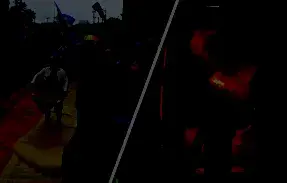NASA: asteroid fragments may fall anywhere (pathway infographics)
The first one fell near Chelyabinsk... Asteroid 2012 DA14 is 45 meters in diameter - this is a 15-storeyed house or half of a football field (photo, video)
Its weight is about 130 thousand tons, the average speed is 31 kilometers per second. It will fly at a minimum distance to the Earth - 27 700 km – on February 15 at 10 p.m.. This distance is approximately equal to two radius of the planet.
For comparison, communications satellites in geostationary orbits fly at an altitude of 35 800 kilometers. Binoculars or a telescope will be needed to look at the asteroid. Depending on the weather, it will be visible from parts of Europe, Africa and Asia. The asteroid will move relatively quickly across the sky from south to north.
This is the closest approach of the asteroid to the Earth in decades. The next close approach will be on February 15, 2046, when the asteroid will fly at a distance of 1 million kilometers.
At the time of the closest approach to the Earth the asteroid will be over the eastern part of the Indian Ocean near the coast of Sumatra.
A lot of small fragments can accompany the asteroid. They can be brought to the planet and fall anywhere. The falling of the asteroid itself is impossible, say NASA experts.
Since 1990, astronomers have never seen such a large object flying so close to the Earth.
NASA scientists believe that there are about 500 thousand near-Earth asteroids of the size of 2012 DA14. Less than 1 percent of them are known. Asteroid 2012 DA14 was first detected in an astronomical observatory in Mallorca in Spain on February 23, 2012. NASA scientists give an estimate that an asteroid of this size will fly close to the Earth every 40 years on average, and collide with it every 1,200 years.
There’s very little chance that the asteroid will collide with some satellite. After all, there are almost no satellites in its way.
By the way, if such an asteroid collided with the Earth, it would release 2.5 megatons of energy in the atmosphere, which would lead to regional devastation. The consequences of such collision are comparable to the Tunguska meteorite, but its impact was slightly less than of 2012 DA14.
NASA will chronicle the asteroid flight live on NASA TV, starting at 22 p.m., Belarusian-time, when the asteroid gets the closest to the Earth. The broadcast from the ISS has already started.



According to the materials of NASA

















